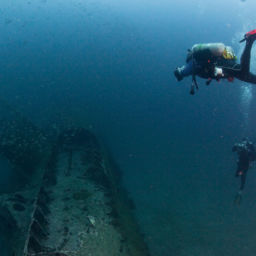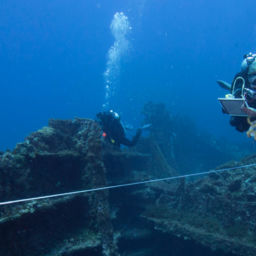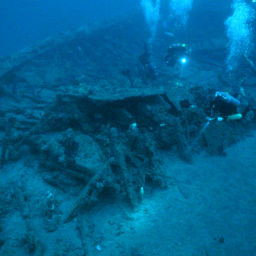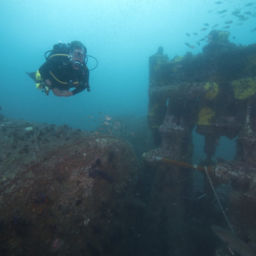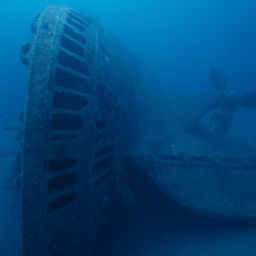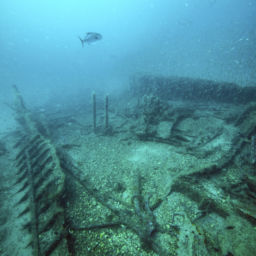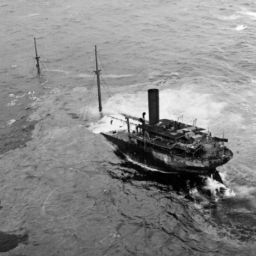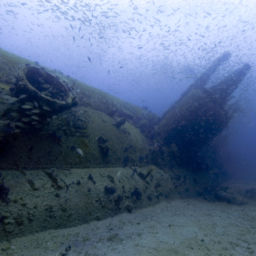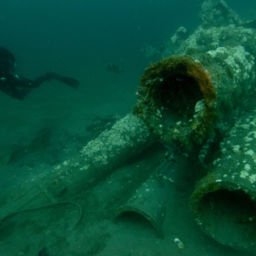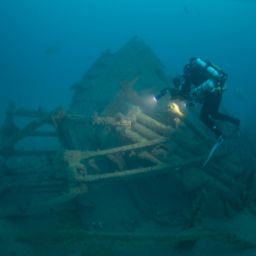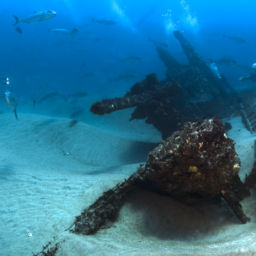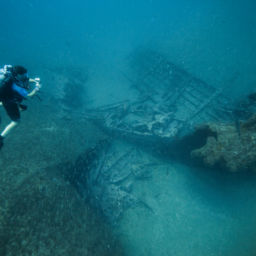Just off coastal North Carolina lies the Graveyard of the Atlantic. This World War II battlefield that serves as the final resting place for nearly 1,700 men. From January to July 1942, German U-boats sank dozens of Allied and merchant vessels off Cape Hatteras with relative ease. Each month, Scuba Diver Life and NOAA will partner to profile 12 different ships in the Graveyard of the Atlantic. This month, we’ll visit the Ashkhabad.
The Ashkhabad sinks
Originally named War Hostage, the Ashkhabad was built during World War I as a standard cargo ship. Following the war, it changed hands and names many times, and was refitted as an oil tanker. The Soviet State Shipping Line bought the tanker in 1934 and added a defensive bow gun as World War II began.
In April of 1942, Ashkhabad began traveling to Cuba from New York, escorted by a converted British trawler, HMT Lady Elsa. It was standard procedure during the war to sail a zigzag course in an effort to avoid U-boat attacks. Unfortunately, this tactic did not work for the Ashkhabad.
Traveling under the cover of darkness on April 30, 1942, the Ashkhabad passed southeast of Cape Lookout, North Carolina. Subsequently, a U-402 fired a single torpedo and hit the ship. The tanker sank in shallow water by its stern. The Lady Elsa safely rescued the entire crew.
The ship was scheduled for salvage, but when the USS Semmes (DD-189) came upon the floating wreckage, the crew was unaware of the intent to salvage. The Semmes had a standard order to sink all wrecks that posed a hazard to navigation, so it fired three shells into Ashkhabad. Not long after another trawler, the HMT St. Zeno, joined in the shelling, completing the destruction of the vessel. Once German U-boats left the area, the U.S. Navy and Coast Guard continued to clear the remains of ships posing hazards to navigation and the Ashkhabad was further destroyed.
Diving the Ashkhabad
Today, the Ashkhabad sits in 55 to 60 feet (17 to 18 m) of water about 17 miles from Cape Lookout, North Carolina. Divers can access it easily from Beaufort or Morehead City. The wreck lies in the warm water of the Gulf Stream, making it a popular site for both fishing and diving. With an abundance of marine life, including many tropical fish, the Ashkhabad is also often home to loggerhead sea turtles.
Divers can not only enjoy the wreck’s beautiful marine life, but they can also dive into World War II history as they survey the wreck site. Visibility at the site varies but can be over 100 feet (30 m), giving divers a great view of the large and widely scattered debris field created from the demolition of the site during the war.
Distributed along the flat, sandy bottom, the Ashkhabad‘s remains are characterized by low relief. The highest points are the tops of the three massive boilers, located in the middle of the debris field. The ship’s large anchor lies away from the ship mostly intact and the ship’s spare propeller sits on the port side toward the middle of the wreck.
Over the years, NOAA has surveyed the site with divers and multibeam sonar to give researchers a detailed look at the features of the wreck site. From the data collected, the agency has produced site plans and dive slates to help divers navigate through the wreck site.
“The Ashkhabad is a great introductory dive for beginner divers, but also offers an opportunity for experienced divers to combine their love of history and marine life,” says Tane Casserley, a NOAA diver and Monitor National Marine Sanctuary’s research coordinator.
Although the Ashkhabad is not considered a war grave because all its crew survived, divers should still leave the wreck and its artifacts intact for future generations. Learn more about the Ashkhabad here.
An expanded sanctuary
In an effort to honor the service and sacrifice of those lost during the Battle of the Atlantic, in 2019 NOAA will release a draft proposal to expand the boundaries of Monitor National Marine Sanctuary. The proposal will include a nationally significant collection of shipwrecks that currently have little or no legal protection. The expansion would also establish the largest area designated as a World War II battlefield anywhere in the world.
To learn more about the proposal, click here.












